When a species has many synoniems (16 in this case), one cannot help but wonder what that means. There may be a couple of reasons for the plethora of names, but in this case the most likely one is the species being so highly variable. Understandably, this makes it often difficult to positively identify it. The situation is further complicated by the fact that the species often grows together with C. bilobum and hybridizes with it, resulting in swarms of plants with intermediate characters.
当一个物种有很多同义词(在这种情况下是 16 个)时,人们不禁想知道这意味着什么。名称过多可能有几个原因,但在这种情况下,最有可能的是物种的高度可变性。可以理解的是,这通常使得很难积极地识别它。由于该物种经常与 C. bilobum 一起生长并与之杂交,因此情况变得更加复杂,从而产生了具有中间特征的植物群。
The plants form small or large cushions (up to 30 cm in diameter), which may be straggly or neatly domed.
植物形成大小不一的垫子(直径可达 30 厘米),可能是散乱的或整齐的圆顶。
The bodies are up to 2.5 cm long and 1.5 cm in diameter, heart-shaped to nearly spherical, usually slightly bilobed and sometimes slightly keeled. The keel lines are often red, the fissure zone has small, windowed patches on either side and the skin is pale green to yellowish green or greyish green, smooth or velvety-papillate and often spotted.
身体长达 2.5 厘米,直径 1.5 厘米,心形至近球形,通常略呈双叶状,有时略呈龙骨状。龙骨线通常是红色的,裂隙区两侧有小窗状斑块,皮肤呈淡绿色至黄绿色或灰绿色,光滑或天鹅绒般的乳突,常有斑点。
As a rule the flowers are yellow (rarely pure white), with petals often drooping. They appear in March -June.
通常,花朵是黄色的(很少是纯白色),花瓣经常下垂。它们出现在 3 月至 6 月。
The plants occur mostly in the western Richtersveld on granite, gneiss, sandstone or quartz slopes -often in shade.
这些植物主要生长在western Richtersveld 的花岗岩、片麻岩、砂岩或石英斜坡上——通常在阴凉处。
All pictures taken 6 Oct. 2011.
原文地址《Frans Noltee:Conophytum meyeri》
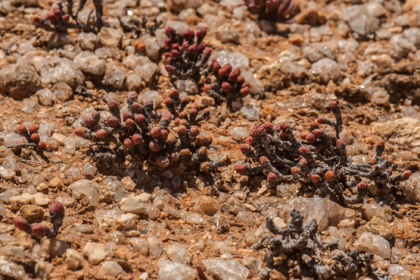
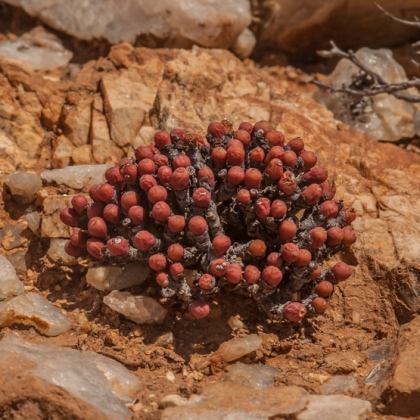
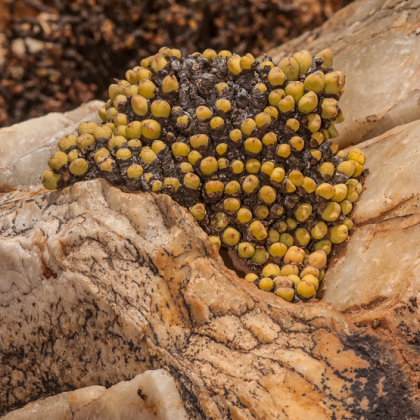
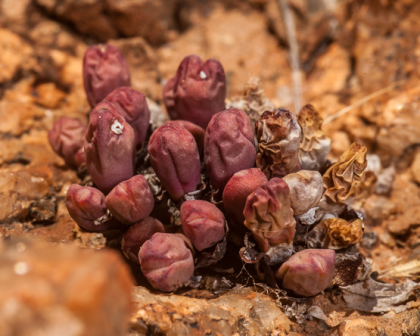
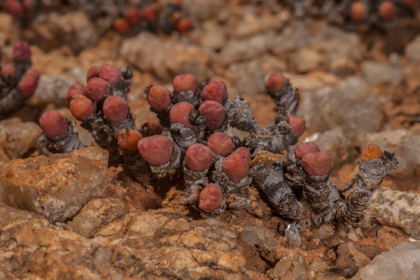
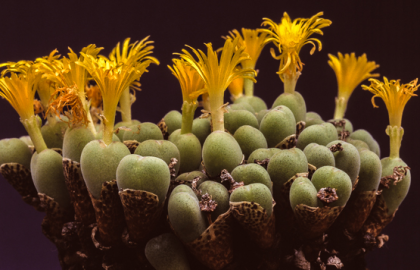
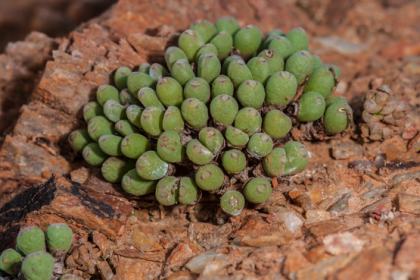
发表评论